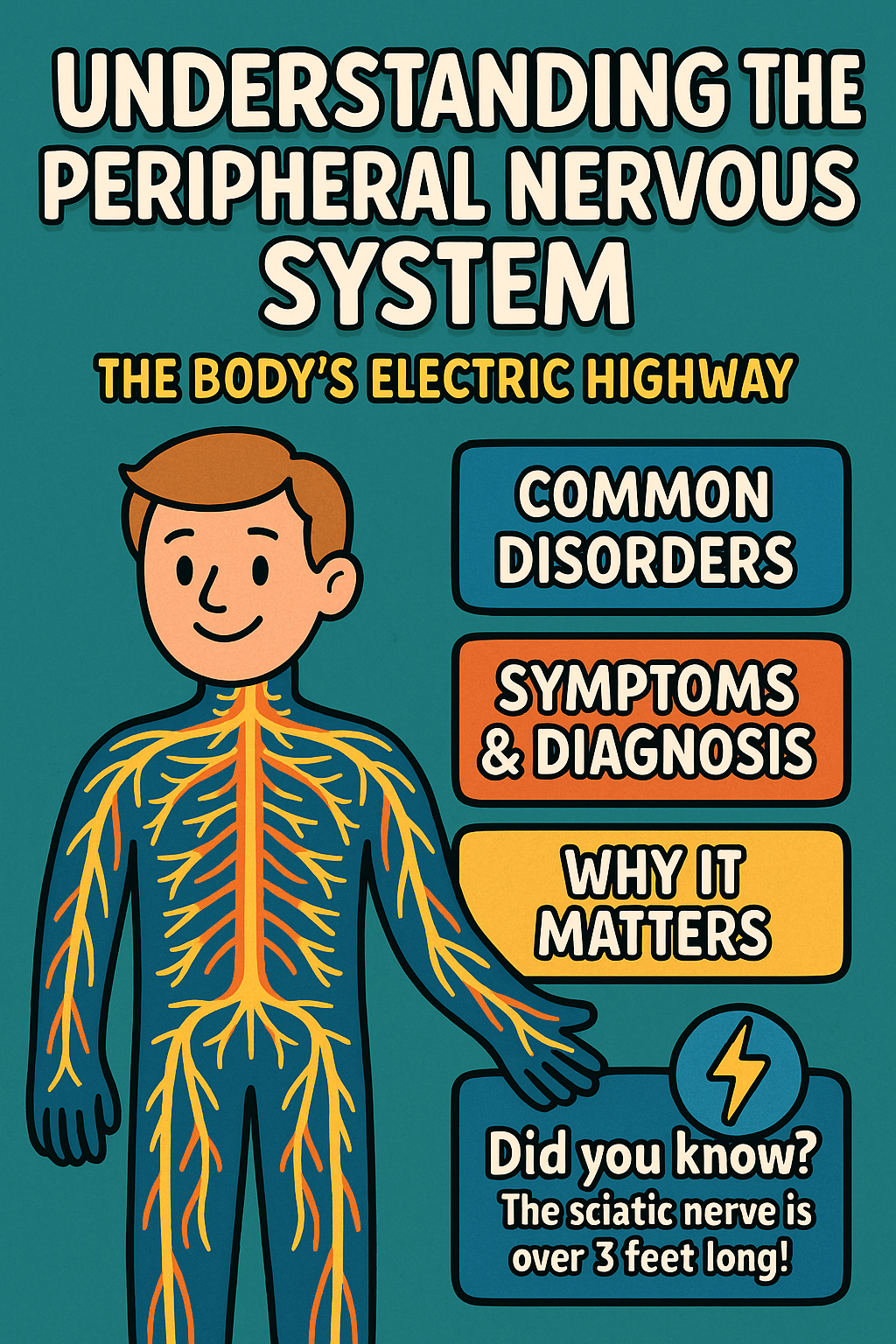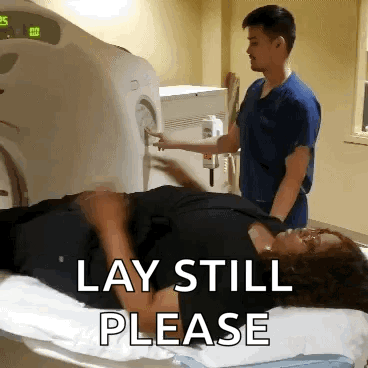The Peripheral Nervous System: The Body’s Electric Highway

Hello again to all of our fantastic Varrock Street Journal readers! We will continue building where we left off last week with our discussion on the nervous system.
Have you ever touched a hot pan and instantly pulled your hand away? Or felt tingling in your feet after sitting too long? These rapid, often unconscious responses are thanks to your peripheral nervous system—the lesser-known yet essential communication network that connects your brain and spinal cord to every limb, organ, and tissue.
This week, we’re taking a deep dive into the Peripheral Nervous System (PNS): what it is, how it works, the conditions that can affect it, and what it looks like when things go wrong.
🧬 The Peripheral Nervous System: An Overview
The PNS includes all the nerves that branch out from the central nervous system (CNS)—which consists of the brain and spinal cord—and extend to the rest of the body. It has two main branches:
- Somatic Nervous System: Controls voluntary movements (like walking or grabbing a pen) and transmits sensory information (like touch or temperature).
- Autonomic Nervous System: Regulates involuntary functions like heartbeat, digestion, and breathing. This system breaks down further into:
- Sympathetic division ("fight or flight")
- Parasympathetic division ("rest and digest")
Think of the PNS as an electrical wiring system running from your brain to your muscles, skin, and organs—making sensation and movement possible.
🩺 Common Disorders of the Peripheral Nervous System
When these communication lines are damaged or interrupted, symptoms can vary widely depending on which nerves are affected.
Here are a few examples:
- Peripheral Neuropathy: Often caused by diabetes, this condition leads to tingling, numbness, and pain in the extremities.
- Guillain-Barré Syndrome: An autoimmune attack on the peripheral nerves that can lead to sudden muscle weakness or even paralysis.
- Carpal Tunnel Syndrome: Caused by compression of the median nerve in the wrist, resulting in pain and weakness in the hand.
- Bell’s Palsy: Temporary paralysis of facial muscles due to inflammation of the facial nerve.
Other causes of PNS dysfunction include trauma, infections, metabolic disorders, vitamin deficiencies (especially B12), and exposure to toxins.

🧪 Diagnosing PNS Conditions
Doctors use a range of tools to diagnose PNS problems:
- Neurological exams to assess reflexes, strength, and coordination.
- Nerve conduction studies (NCS) and electromyography (EMG) to measure electrical activity.
- Blood tests to look for underlying causes like diabetes or vitamin deficiencies.
- Imaging (MRI or CT scans) to rule out spinal cord compression or tumors.
Early diagnosis is crucial—many conditions are treatable or reversible if caught in time.

🧠 Why This Matters
The PNS is responsible for how we interact with the world—from feeling textures and temperatures to reacting to pain and moving our bodies. Damage to this system can significantly impair quality of life and may even pose life-threatening risks in conditions like autonomic failure or GBS.
Understanding how the PNS works gives us insight into chronic pain syndromes, muscle weakness, sensory issues, and the body's capacity to heal and adapt.
🔬 Spotlight on the Future
Researchers are currently exploring ways to regrow damaged nerves and enhance nerve repair with:
- Stem cell therapy
- Neuroprotective drugs
- Advanced prosthetics with nerve integration
- AI-driven diagnostics for neuropathies
As we develop better ways to interface with and understand the PNS, treatment will become more precise and effective.
📌 Final Thoughts
The peripheral nervous system is your body’s messenger—subtle, fast, and indispensable. While most people are familiar with the brain and spine, few realize how much of our daily lives rely on healthy peripheral nerves. Whether you’re running, blinking, digesting food, or reacting to danger, your PNS is constantly at work.
Let’s keep that electric highway healthy—through proper nutrition, managing chronic conditions like diabetes, and seeking early medical attention for any unusual sensations or weakness.
This is a longer podcast episode, but if you want a better understanding, here you go!
🤔 Did You Know?
The longest nerve in the human body is the sciatic nerve, running from your lower back down each leg. It can be over three feet long in tall adults!
🧠 Reflection Questions
- Have you or someone you know experienced nerve-related symptoms like tingling or numbness?
- How do you think your lifestyle choices affect the health of your nervous system?
- What steps can you take today to support long-term nerve health?
📚 References
- Mayo Clinic. (2023). Peripheral Neuropathy
- National Institute of Neurological Disorders. (2024). Guillain-Barré Syndrome Fact Sheet
- Cleveland Clinic. (2024). Autonomic Nervous System Disorders
- Johns Hopkins Medicine. Nerve Conduction Studies
